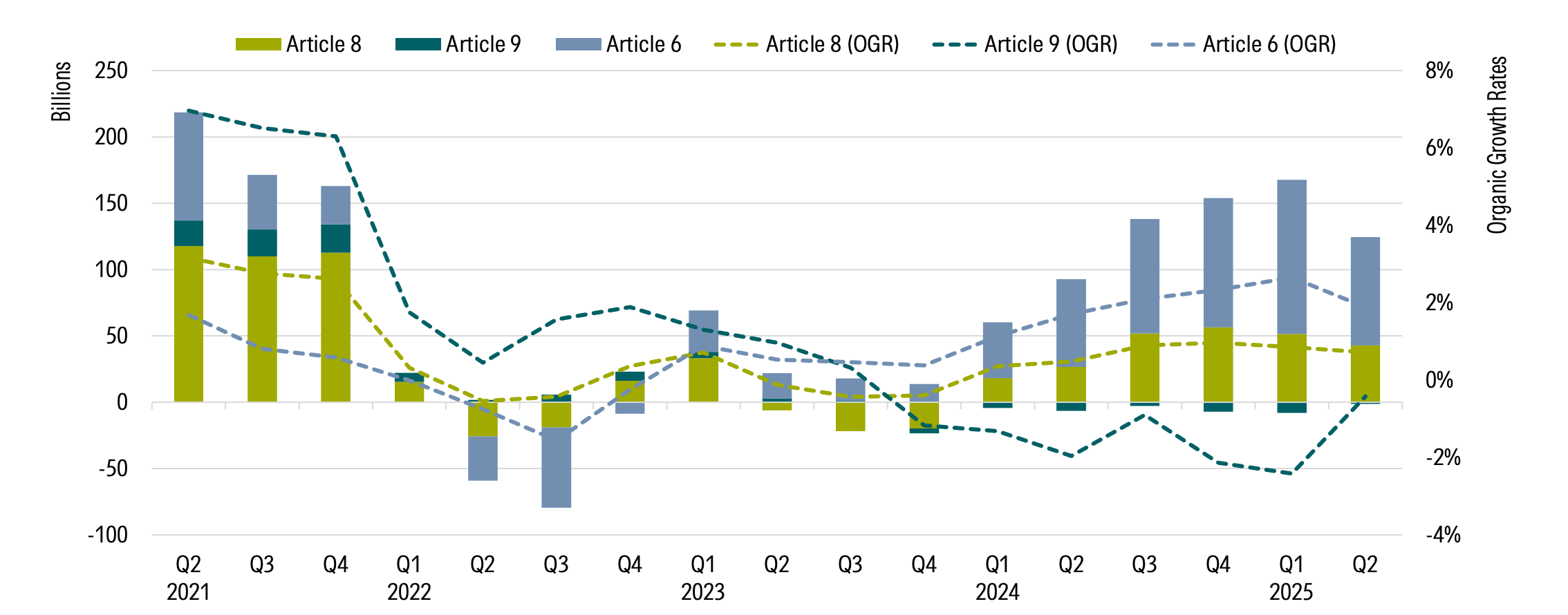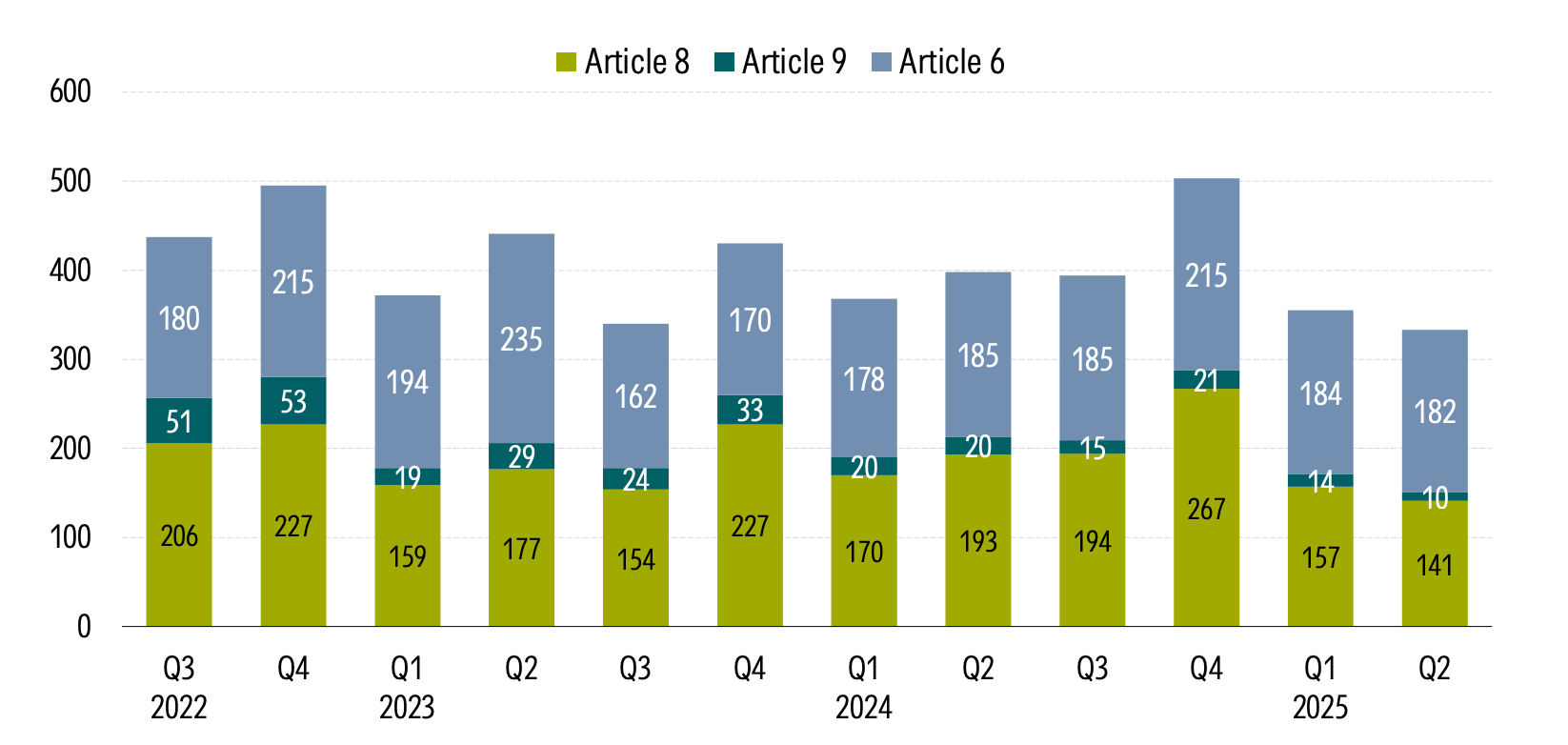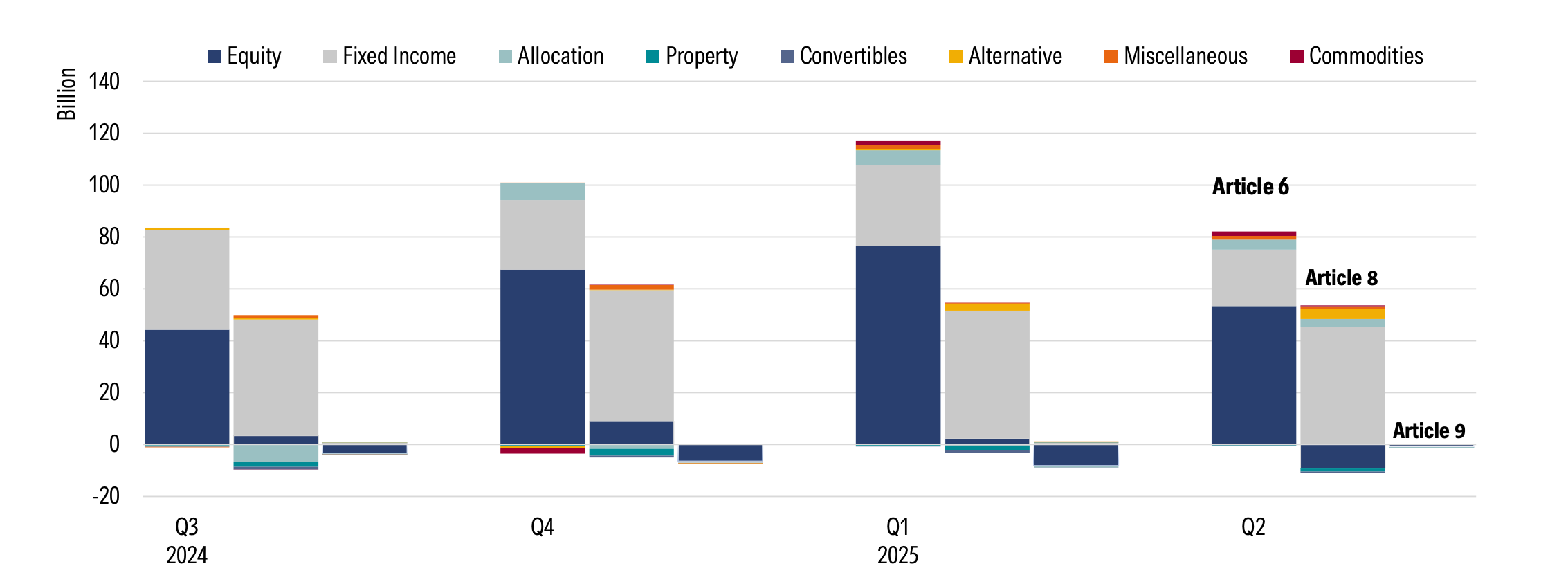7 min read
SFDR Sustainable Fund Assets Climb to EUR 6.4 Trillion Despite Flow Slowdown
Explore the requirements, fund flows, and ESG risks of Article 8 and Article 9 funds.

What are the Article 8 fund requirements?
Article 8 Funds Attract Higher Inflows and Article 9 Funds Significantly Reduce Outflows
Quarterly Flows Into Article 8 and Article 9 Funds Versus Article 6 Funds (EUR Billion) and Organic Growth Rates (%)

Source: Morningstar Direct. Data as of June 2025. Based on SFDR data collected from prospectuses of 98% of funds available for sale in the EU, excluding money market funds, funds of funds, and feeder funds.
What Proportion of Assets Are in Article 8 Funds?
How Many New Article 8 Funds Launched Last Quarter?
Quarterly Breakdown of Fund Launches

Source: Morningstar Direct. Data as of June 2025. Based on SFDR data collected from prospectuses on 98% of funds available for sale in the EU, excluding money market funds, funds of funds, and feeder funds.
Fixed Income Remains the Key Contributor to Article 8 Fund Inflows
Net Flows Into Article 8, Article 9, and Article 6 Funds Per Asset Class (EUR Billion)

Source: Morningstar Direct. Data as of June 2025. Based on SFDR data collected from prospectuses of 98% of funds available for sale in the EU, excluding money market funds, funds of funds, and feeder funds.